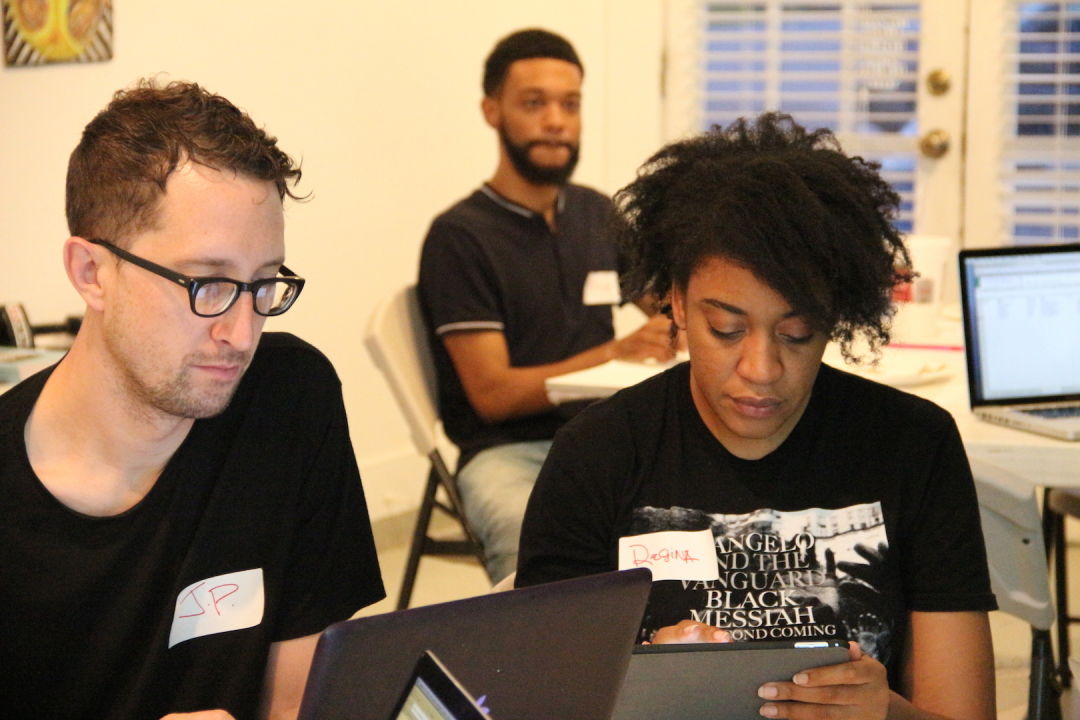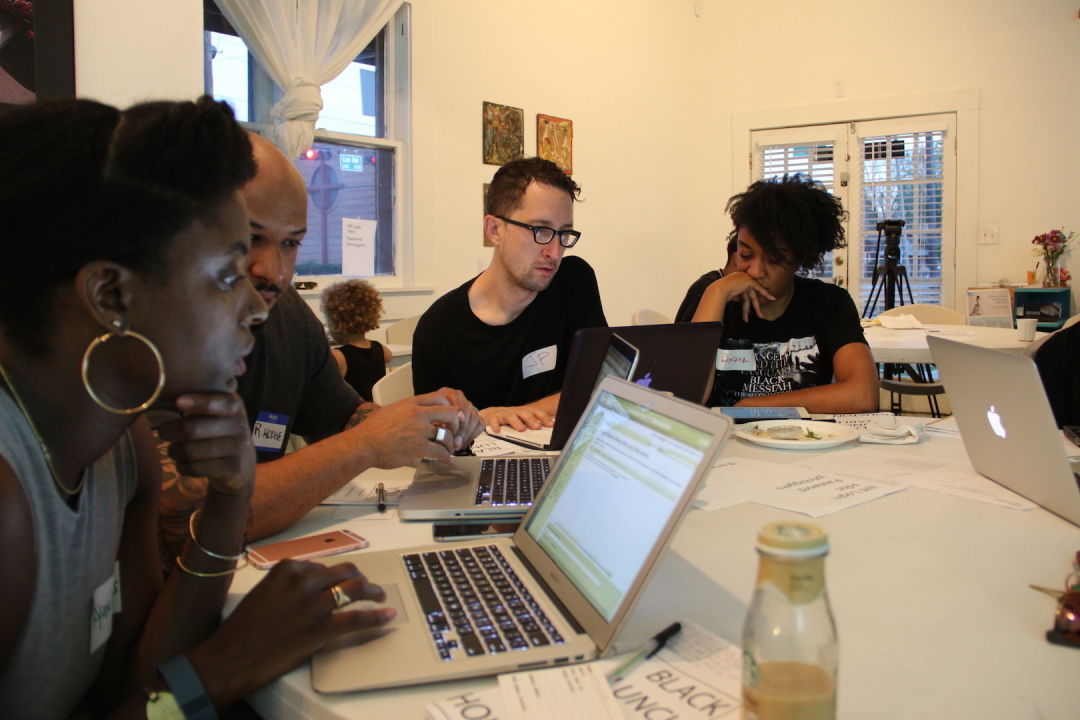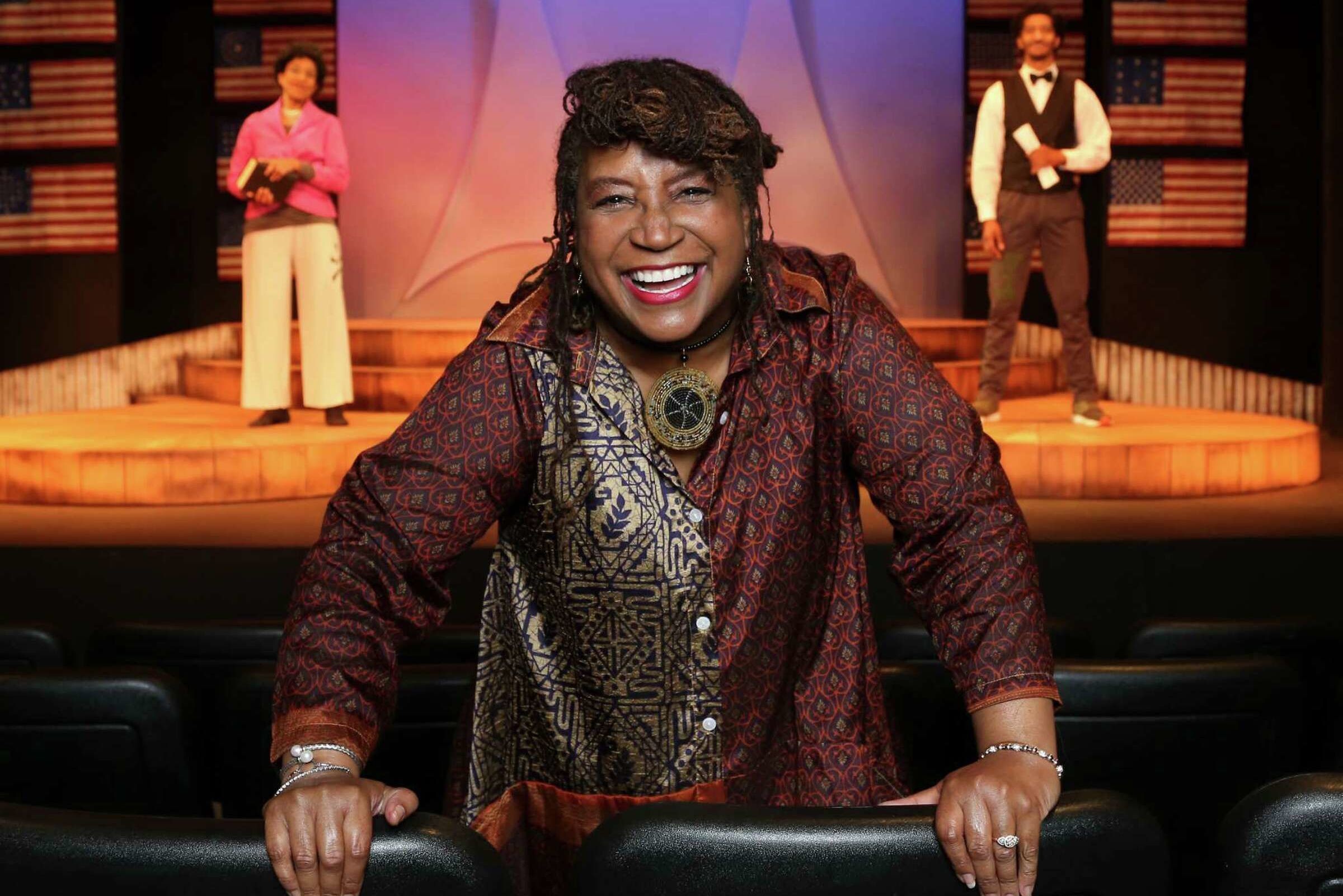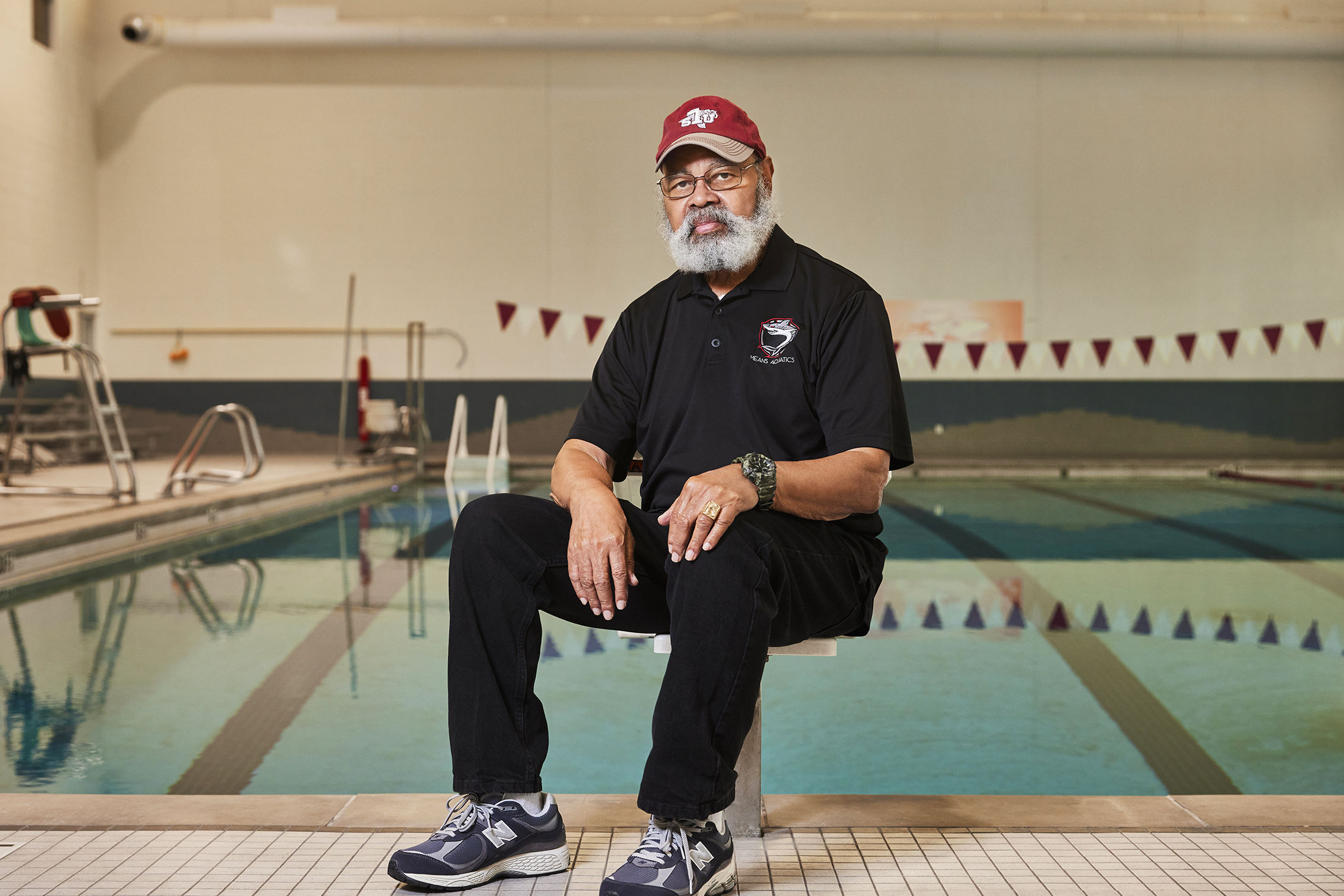Taking a Seat at the Black Lunch Table

Image: Michael McFadden
In 2005, while in residency at the Skowhegan School of Painting and Sculpture in Maine, artists Jina Valentine and Heather Hart created Black Lunch Table in an effort to address the absence of black visual artists in the art historical canons.
“We decided to make something of a performance where all the black students at the residency were to sit together for lunch one day,” says Valentine. “We came to lunch and talked about the experience of self-segregation and that phenomenon in relation to high school and college lunch rooms, but then also how that translates from groups out into the professional world.”
The Black Lunch Table, held last week at Third Ward art collective Project Row Houses, can be described as being an umbrella project for a number of events that the duo curates including round table discussions between artists of color and more recently the integrated tables based around the Black Lives Matter movement. This led to co-teaching salons, and now there are the Wikipedia Edit-a-Thons hosted all over the country. In a communal setting, the Edit-a-Thons give participants a chance to narrate the stories of Houston visual artists who are of the African Diaspora and try to fill Wikipedia with new pages that are absent or to beef up pages that already exist.

Image: Michael McFadden
For Project Row Houses Public Art Director Ryan Dennis, hosting the Black Lunch Table in the historically black arts community just made sense. “It’s in line with our mission in terms of really utilizing our creativity to transform our neighborhood and think about African American history and culture,” she noted. “I think it’s very important because Project Row Houses has worked with a number of incredible artists, both locally and nationally. Having the opportunity to talk about their work and their process, and relevance to contemporary art practices is really important.”
Of the 33 black artists or artists of color who were selected by Project Row Houses to be in focus that night, only four actually had Wikipedia pages; the rest were absent entirely. This could be reasoned because since its inception back in 2001, Wikipedia has been predominately written and edited by white editors.
“Part of what we’re doing in the Wikipedia Edit-a-Thons is trying to push against the Wikipedia rules a little bit by providing information for local artists who maybe don’t have as much credit,” said Hart. “If we can’t have two museum shows and three New York Times articles written about these artists, this is the equivalent, at the local level, that we can include to legitimize these artists as important for encyclopedia.”




